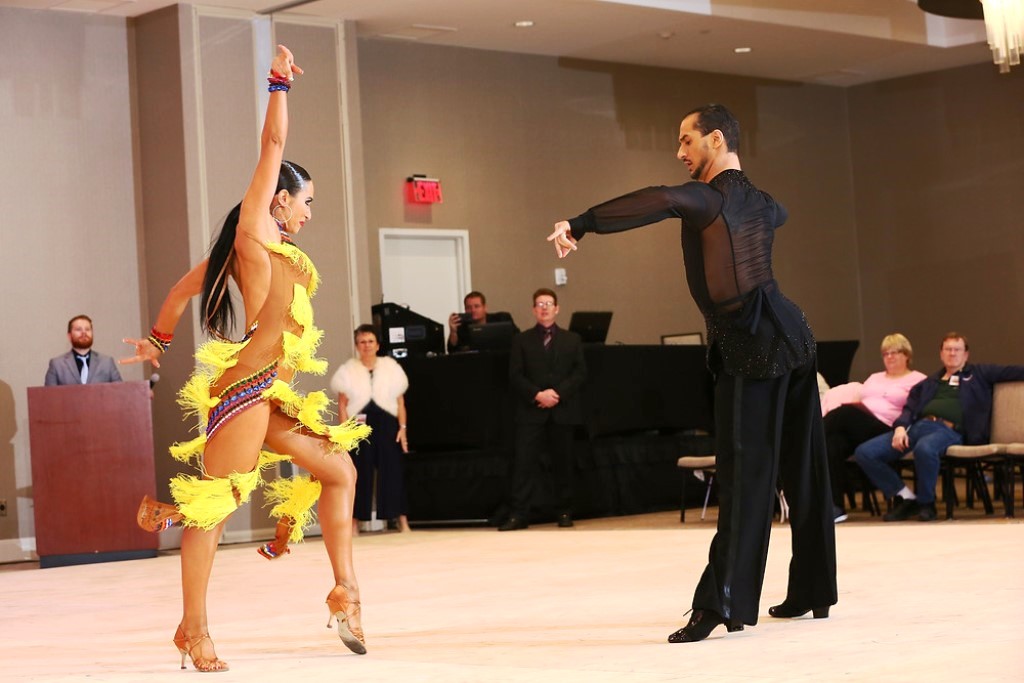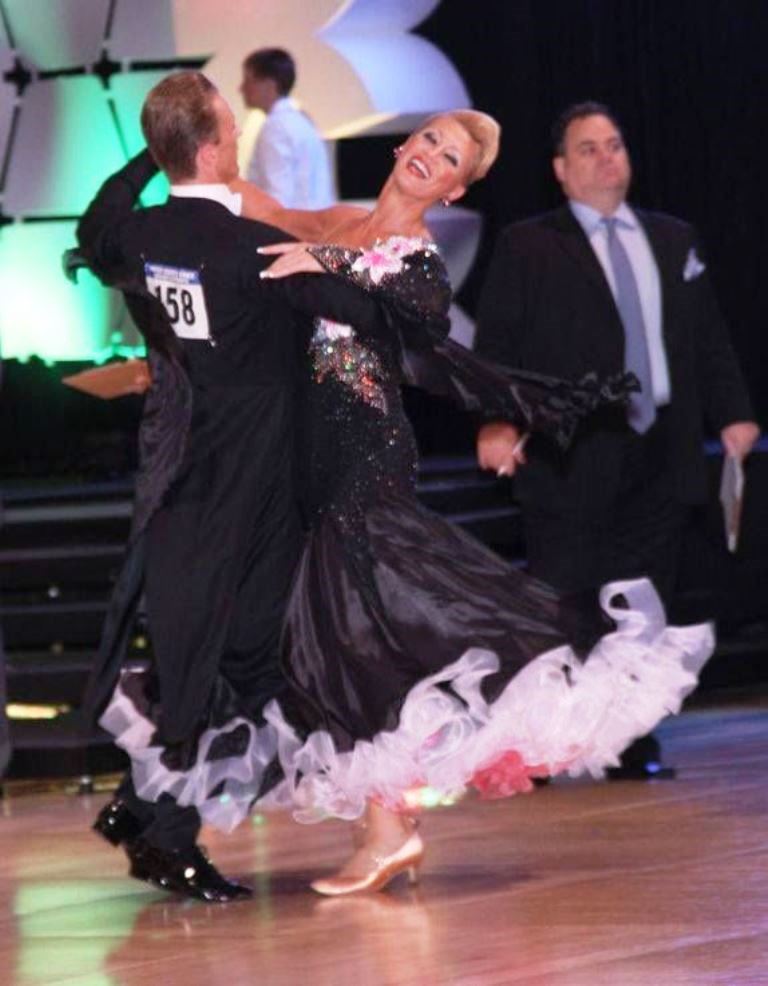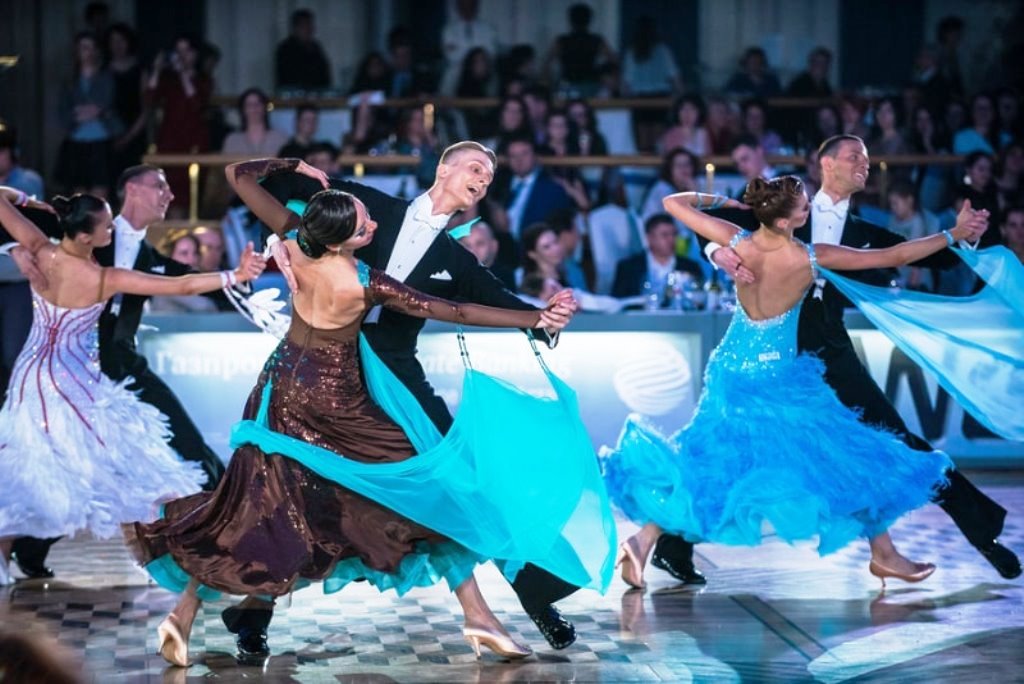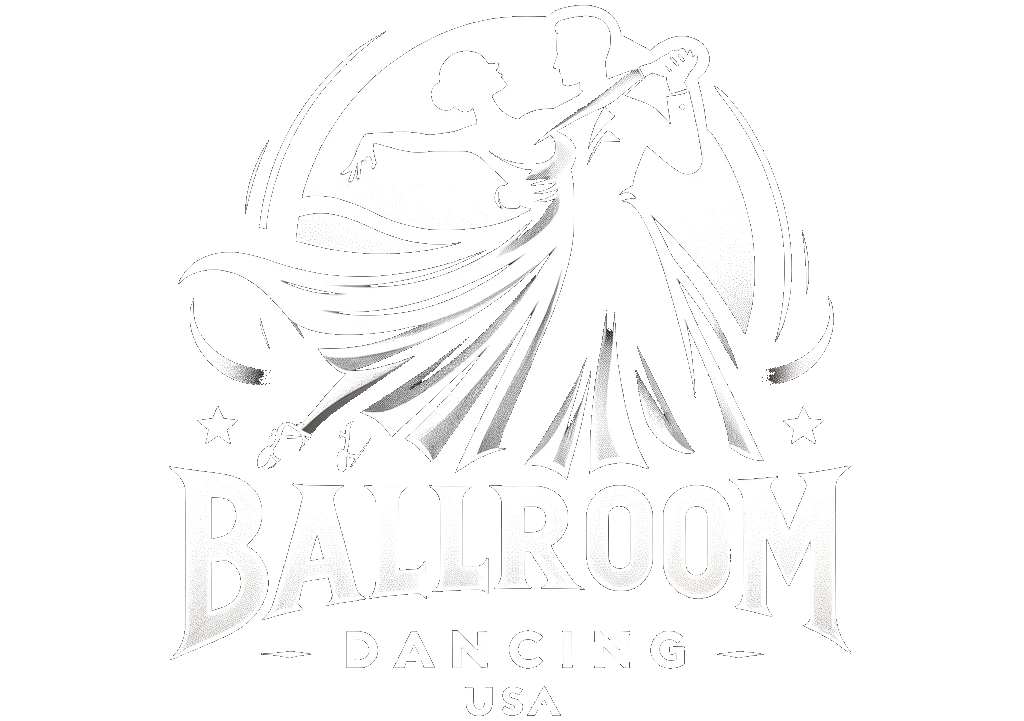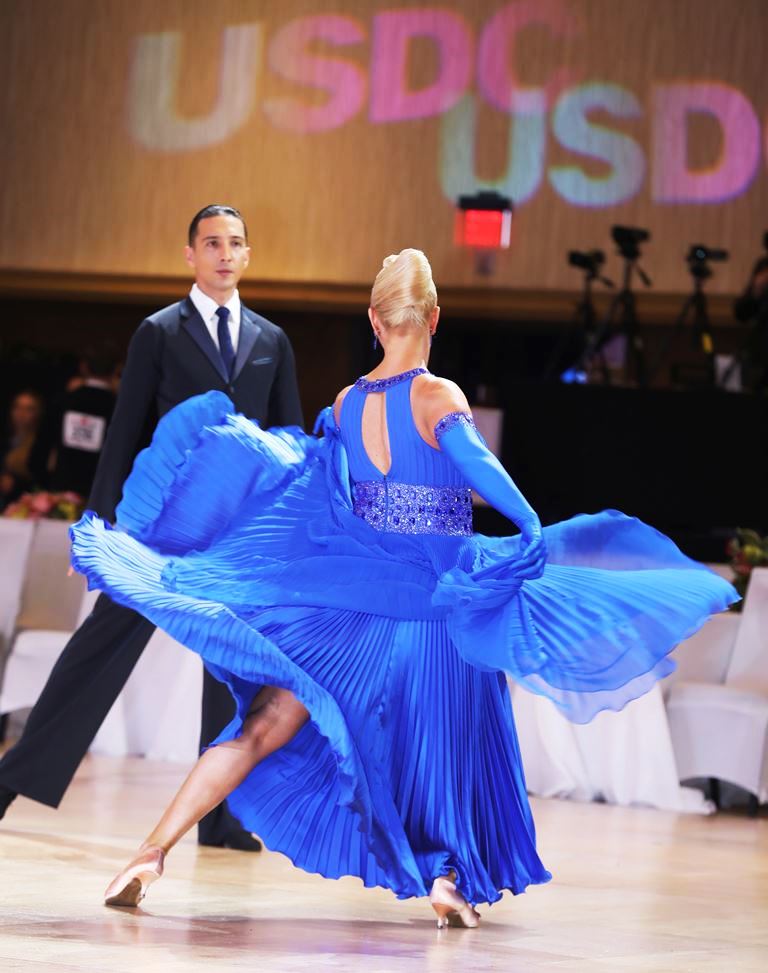
I. Introduction
I. Introduction
Music selection plays an important role in ballroom dancing competitions in the United States. It is essential for competitors to choose the right music to create an atmosphere that will captivate the audience and judges. The right music selection can make the difference between a successful performance and an unsuccessful one. In this article, we will explore the role of music selection in ballroom dancing competitions in the United States and discuss the factors that should be taken into consideration when selecting music for a competition.
A. Definition of ballroom dancing
Definition of Ballroom Dancing
Ballroom dancing is a form of partner dancing that is commonly seen in competitions and social events. It is characterized by its graceful movements and intricate footwork, and is composed of a variety of dances, including the waltz, tango, foxtrot, and cha-cha. The dances are usually performed to music that is specifically chosen for the dance. Ballroom dancing is a popular hobby for many people, and competitions are held in many countries around the world.
B. Overview of ballroom dancing competitions in the United States
Overview of Ballroom Dancing Competitions in the United States
Ballroom dancing competitions in the United States are typically organized by a national dance organization. These organizations are responsible for setting the rules, regulations, and guidelines for the competitions. They also organize and manage the events, which may include the selection of judges, and the selection of music.
The most popular type of competition in the United States is the National DanceSport Championship. This is an annual competition held in various cities throughout the country. It consists of two days of competition, with dancers competing in various styles of ballroom dancing. The National DanceSport Championship is open to both amateur and professional dancers, and the winners of the competition receive awards and recognition.
In addition to the National DanceSport Championship, there are also regional and local competitions. These competitions are generally smaller and less formal than the National DanceSport Championship, but they can still provide a great opportunity for dancers to show off their skills.
Types of Music Used in Ballroom Dancing Competitions in the United States
The type of music used in ballroom dancing competitions in the United States varies depending on the type of competition. Generally, the music used in the National DanceSport Championship is a combination of Latin, Standard, and Smooth styles. Regional and local competitions may use a variety of music, including pop, jazz, and classical.
Music Selection
Music selection is an important part of ballroom dancing competitions in the United States. Competitors must select music that is appropriate for the dance style and that will showcase their dancing skills. Music must also be appropriate for the competition rules and regulations.
Choosing Music
When choosing music for a competition, dancers must take into account the type of dance they are performing. For example, a Viennese Waltz should be accompanied by a waltz-style piece of music, while a Cha Cha should be accompanied by a cha cha-style piece of music. Additionally, the tempo of the music should match the tempo of the dance, and the music should be of a suitable length to match the length of the dance.
Music Requirements
In addition to choosing music that is appropriate for the dance style, dancers must also adhere to any music requirements set by the competition. This may include restrictions on the type of music that can be used, such as no lyrics or explicit content, or a requirement to use a certain type of instrumentation.
Music Sources
Dancers can source music from a variety of sources, including record labels, online music services, and songwriters. It is important to ensure that the music is properly licensed for use in competitions and that the dancer has the necessary permissions to use the music.
II. The Role of Music Selection in Ballroom Dancing Competitions
II. The Role of Music Selection in Ballroom Dancing Competitions
Music selection is a critical part of ballroom dancing competitions in the United States. Music sets the tone and rhythm of a dance, and can be used to emphasize a certain style or technique. Competitors must choose music that is appropriate to the dance they are performing and that will showcase their skills.
Choosing Appropriate Music
When selecting music for a ballroom dance competition, competitors must choose music that is appropriate to the dance they are performing. This includes selecting music that is within the proper tempo, time signature, and style for the dance. For example, a waltz should be performed to music with a three-quarter time signature, while a cha-cha should be performed to music with a four-four time signature. Additionally, the music should be appropriate to the level of the competition. Music for higher-level competitions should be more complex and challenging than music for lower-level competitions.
Showcasing Skills
Another important factor to consider when selecting music for a ballroom dance competition is how the music will showcase the competitors’ skills. Competitors should choose music that highlights their technique and emphasizes their strengths. This could include selecting music with a particular rhythm or tempo that allows the competitors to demonstrate their skill, or choosing music that is more difficult and showcases their ability to perform complex steps. Additionally, the music should be chosen to match the style of the dance, as different styles require different tempos and rhythms.
Conclusion
Music selection is an important part of ballroom dancing competitions in the United States. Competitors must choose music that is appropriate to the dance they are performing, as well as music that will showcase their skills. By carefully selecting the right music, competitors can ensure that their performance is memorable and enjoyable.
A. Types of music used in ballroom dancing
Types of Music Used in Ballroom Dancing
Ballroom dancing competitions in the United States typically use a variety of different music genres, including jazz, Latin, swing, and classical. Jazz is a popular choice for dancers competing in the American Smooth and American Rhythm styles. Latin music is often used for the Latin dances, such as the Cha Cha, Samba, and Rumba. Swing music is used in the Jive, West Coast Swing, and East Coast Swing dances. Classical music is used in the Waltz, Foxtrot, and Tango.
Jazz
Jazz music is often used in American Smooth and American Rhythm dances. This genre of music is characterized by improvisation, syncopation, and complex rhythms. It is often used to create a sense of energy and excitement on the dance floor.
Latin
Latin music is popular in Latin dances such as the Cha Cha, Samba, and Rumba. This genre of music is characterized by a strong beat and a sensual rhythm. It is often used to create a passionate and romantic atmosphere on the dance floor.
Swing
Swing music is often used in the Jive, West Coast Swing, and East Coast Swing dances. This genre of music is characterized by a strong beat, a syncopated rhythm, and improvisation. It is often used to create a fun and energetic atmosphere on the dance floor.
Classical
Classical music is often used in the Waltz, Foxtrot, and Tango dances. This genre of music is characterized by a steady tempo and a structured form. It is often used to create a graceful and elegant atmosphere on the dance floor.
B. How the music is selected for competitions
How the Music is Selected for Competitions
The music selection for ballroom dancing competitions in the United States is an important factor in determining the success of a performance. Music is selected for its ability to showcase the dancer’s skill and to create an atmosphere that is both exciting and entertaining for the audience.
Music Criteria
The criteria for selecting music for ballroom dancing competitions in the United States includes: tempo, rhythm, style, and musicality. Music should be selected that is appropriate for the level of the competition and the age of the dancers. The tempo should be fast enough to showcase the dancer’s skill, but not so fast that it becomes difficult to follow. The rhythm should be consistent and the style should be appropriate for the dance. Finally, the musicality should be engaging and entertaining.
Music Selection Process
The music selection process for ballroom dancing competitions in the United States typically involves a panel of judges and a music director. The judges are responsible for evaluating the music selections and providing feedback on the songs. The music director is responsible for selecting the music and ensuring that it meets the criteria for the competition. The music director may also consult with the judges and dancers to ensure that the music selection is appropriate for the competition.
Conclusion
Music selection for ballroom dancing competitions in the United States is an important factor in determining the success of a performance. Music should be selected that is appropriate for the level of the competition and the age of the dancers. The selection process typically involves a panel of judges and a music director. By taking the time to select the right music, dancers can ensure that their performance is exciting and entertaining for the audience.
C. The importance of the music selection
The Importance of Music Selection in Ballroom Dancing Competitions
Music Selection is Crucial
Music selection is an integral part of any ballroom dancing competition. The music chosen for a performance can set the tone and atmosphere of the competition, and can be the difference between a winning performance and an average one. Music selection is also key to creating an atmosphere of excitement and anticipation for the audience.
The right music selection can also provide the dancers with the opportunity to showcase their skills in a unique way. By choosing the right music, dancers can create a performance that is both entertaining and technically challenging. This can give them an edge over their competition, as the audience will be more likely to remember their performance.
Music selection can also be used to create a sense of connection between the dancers and the audience. By choosing music that resonates with the audience, the dancers can create an atmosphere of camaraderie and shared experience. This can create a lasting impression on the audience, making them more likely to remember the performance and the dancers.
Finally, music selection can be used to create a sense of drama and tension. By selecting the right music, the dancers can create a performance that is both exciting and captivating. This can help to create an atmosphere of anticipation and suspense, which can be a powerful tool in helping the dancers to stand out from the competition.
Conclusion
Music selection is a key element of any ballroom dancing competition, and can be the difference between a winning performance and an average one. By choosing the right music, dancers can create an atmosphere of excitement, camaraderie, and drama that will be remembered by the audience. Music selection is therefore an essential part of any ballroom dancing competition, and should not be overlooked.
Conclusion
The selection of music for ballroom dancing competitions in the United States is an important factor that can affect the outcome of the event. The type of music chosen should be carefully considered to ensure it is appropriate for the particular dance style and that it is of a suitable tempo and length. The music should also be chosen to create a positive atmosphere and to make the competition enjoyable for both the competitors and the audience. Ultimately, the music selection should be tailored to the preferences of the competitors and the audience in order to create an enjoyable and successful event.
III. The Impact of Music Selection on Competitions
III. The Impact of Music Selection on Competitions
Music selection is a critical factor in ballroom dancing competitions in the United States. It can have a major impact on the outcome of the competition, as it can influence the judges’ decisions and affect the overall atmosphere of the event.
The music selection can influence the judges’ decisions in two ways. First, the judges may be more likely to award higher scores to couples whose dancing matches the style and tempo of the music. For example, a couple performing a Viennese Waltz may receive higher scores if they dance to a slow and romantic piece of music, rather than a fast and energetic piece. Second, the judges may be more likely to award higher scores to couples whose dancing style is more suited to the music they are dancing to. For example, a couple performing a Latin dance may receive higher scores if they dance to a Latin-style piece of music, rather than a piece of music with a more traditional ballroom style.
The music selection can also have an impact on the overall atmosphere of the event. The type of music played can create an exciting and energetic atmosphere that encourages the audience to get involved and cheer on the competitors. Conversely, if the wrong type of music is chosen, it can create a dull and uninspiring atmosphere that may put the audience off from engaging with the event.
Finally, the music selection can influence the overall performance of the couples competing in the event. If the music is too fast or too slow, it can throw the couples off their rhythm and make it difficult for them to perform their best.
In conclusion, music selection is a vital factor in ballroom dancing competitions in the United States. It can have a major impact on the outcome of the competition, as it can influence the judges’ decisions and affect the overall atmosphere of the event.
A. How music selection affects the dancers
A. How Music Selection Affects the Dancers
The music selection in ballroom dancing competitions in the United States is critical to the success of the dancers. The music helps to set the tone and mood of the competition and can influence the dancers’ performance. The tempo, rhythm, and style of music can all have an impact on the dancers’ ability to execute their routines.
In competitions, the music selection often reflects the style of the dance being performed. For example, a waltz will typically be performed to slower, more romantic music, while a jive will be performed to faster-paced and more upbeat music. The music should be chosen carefully to ensure that it is appropriate for the level of the competition and that it enhances the performance of the dancers.
The music selection also has a direct impact on the dancers’ ability to perform their steps and movements. If the music is too fast or too slow, the dancers may struggle to keep up with their steps. If the music is too loud or too quiet, the dancers may have difficulty hearing the beat and keeping in sync with the music.
Conclusion
The music selection in ballroom dancing competitions in the United States is an important factor in the success of the dancers. The tempo, rhythm, and style of the music should be carefully chosen to ensure that it enhances the performance of the dancers and helps them to execute their steps and movements.
B. How music selection affects the judges
How Music Selection Affects the Judges
Music selection is an important factor in ballroom dancing competitions in the United States. Judges pay close attention to the music chosen by competitors, as it is a reflection of their skill and artistry. The judges often consider the musicality of the selection, the complexity of the steps, and the overall presentation of the performance.
The type of music chosen can have a major impact on the outcome of a competition. For example, if a competitor chooses a slow, romantic song for their performance, the judges may expect a graceful, elegant performance. On the other hand, if a competitor chooses a fast-paced, energetic song, the judges may expect a high-energy, dynamic performance.
Musicality
The musicality of the music selection is an important factor for the judges. They will often look for a connection between the music and the movements of the competitors. If the steps are not in sync with the music, the judges may be less impressed.
Complexity
The complexity of the steps is also important. The judges will look for intricate and challenging steps that demonstrate the competitor’s skill and mastery of the dance. Simple steps may be seen as a sign of inexperience or lack of effort.
Overall Presentation
Finally, the overall presentation of the performance is important. The judges will look for a performance that is well-rehearsed and professionally presented. They will also look for a performance that is entertaining and engaging. If the performance is dull or uninspired, the judges may not be impressed.
Ultimately, the judges will be looking for a performance that is well-executed, musically sound, and entertaining. The music selection plays a major role in how the judges perceive the performance, so it is important for competitors to choose their music carefully.
C. How music selection affects the audience
How Music Selection Affects the Audience
Music selection plays an important role in the enjoyment of ballroom dancing competitions for the audience. Music is the foundation of the performance, and it is what the audience listens to and interacts with. The music selection should be chosen carefully to create a positive atmosphere and to ensure that the audience is engaged and entertained.
The type of music chosen for a performance can affect the audience’s experience in a number of ways. For example, a fast-paced, upbeat piece of music can energize the audience and create an exciting atmosphere. Likewise, a slower, more romantic piece of music can create a more intimate atmosphere and evoke emotion from the audience.
The tempo of the music also plays an important role in the audience’s experience. Faster tempos can create a sense of excitement and energy, while slower tempos can create a more relaxed atmosphere. Additionally, the tempo of the music can affect the dancers’ performance, as it can influence the speed and intensity of their movements.
The genre of music chosen can also have an impact on the audience’s experience. Different genres of music can evoke different emotions and create different atmospheres. For example, classical music can create a more formal atmosphere, while jazz can create a more relaxed atmosphere.
Finally, the lyrics of the music can also affect the audience’s experience. Lyrics that are uplifting, inspiring, and positive can create a more positive atmosphere, while lyrics that are sad or depressing can create a more somber atmosphere.
Conclusion
Music selection plays an important role in the enjoyment of ballroom dancing competitions for the audience. The type of music chosen, the tempo of the music, the genre of music, and the lyrics of the music can all affect the audience’s experience. Therefore, it is important to choose the music carefully to ensure that the audience is engaged and entertained.
Conclusion
Music selection plays an important role in ballroom dancing competitions in the United States. Competitors must choose music that is appropriate for the style of dance, that fits the time limit, and that appeals to the judges. The selection of music can be the difference between a successful performance and a failed one.
In addition to choosing the right music, competitors must also practice and perfect their moves in order to be successful in a ballroom dancing competition. With the right combination of music selection and practice, competitors can increase their chances of success in ballroom dancing competitions.
References
1. Ballroom Dance Academy. (n.d.). “Music Selection for Ballroom Dancing Competitions.” Retrieved from https://www.ballroomdanceacademy.net/music-selection-for-ballroom-dancing-competitions/
2. DanceSport. (n.d.). “Music Selection.” Retrieved from https://www.dancesport.uk.com/music-selection/
3. World DanceSport Federation. (n.d.). “Music.” Retrieved from https://www.worlddancesport.org/rules/music
IV. Conclusion
IV. Conclusion
Ballroom dancing competitions in the United States are an important part of the cultural and artistic life of the nation. Music selection plays an important role in these competitions, as it can help create an atmosphere of excitement and anticipation, as well as a sense of unity among the competitors. The appropriate music selection can also help to create a memorable experience for the audience, as well as the competitors.
The selection of music for ballroom dancing competitions must be carefully considered and tailored to the specific event. Music can be chosen to suit the style of the competition, the level of the competitors, and the audience. It is important to select music that is appropriate for the event and that will help to create an enjoyable atmosphere for everyone involved.
In conclusion, music selection is an important factor in ballroom dancing competitions in the United States. It can help to create a memorable experience for competitors and audiences alike, and can help to create a sense of unity among competitors. Careful consideration must be taken when selecting the appropriate music for a competition, as the right music can help to create an enjoyable atmosphere for everyone involved.
